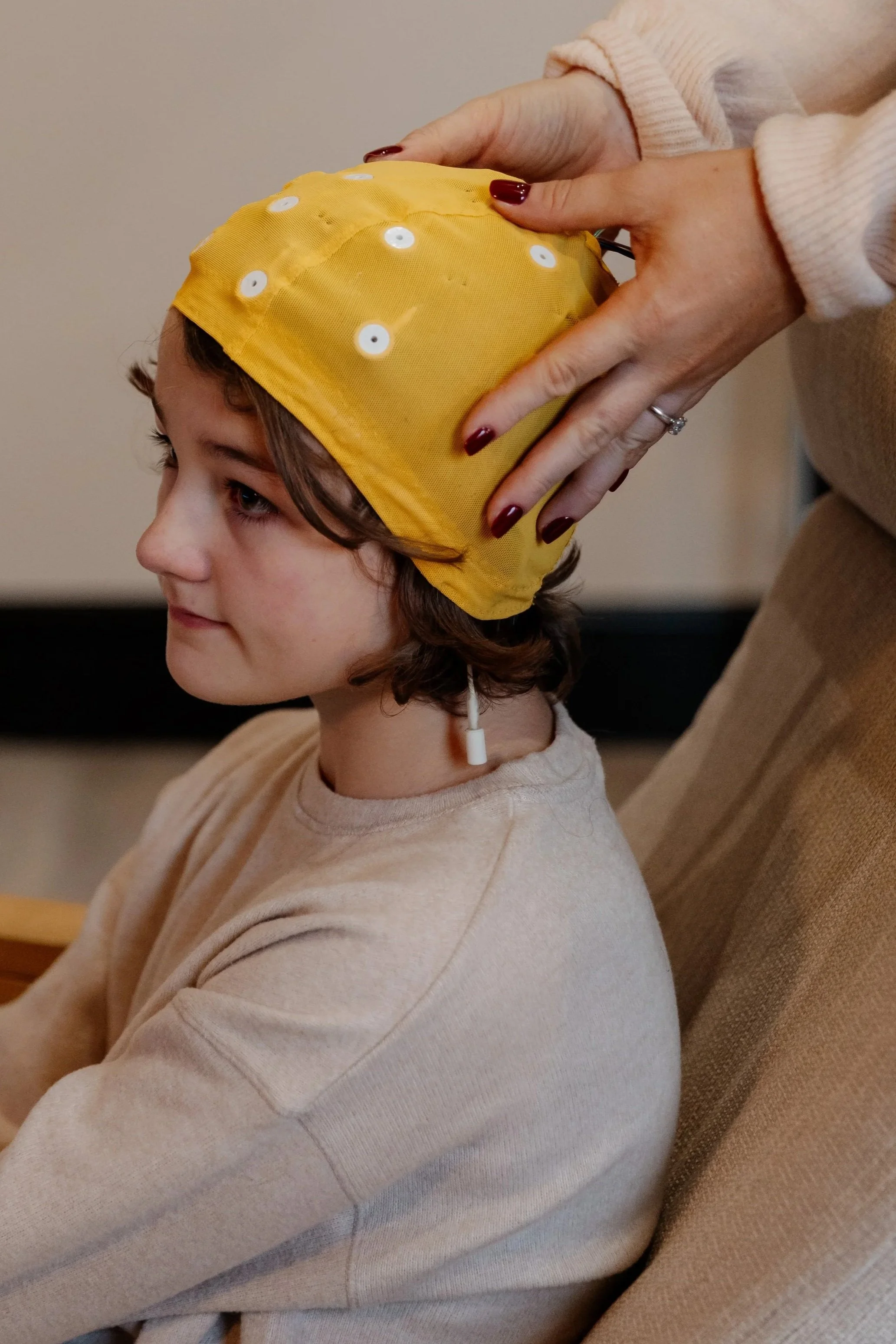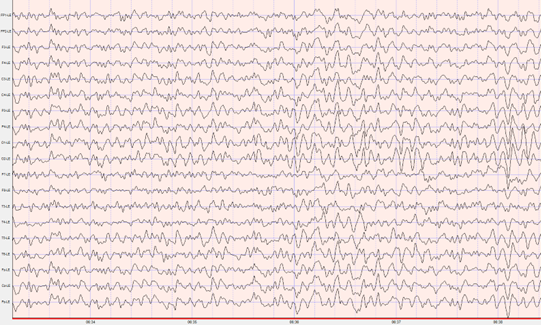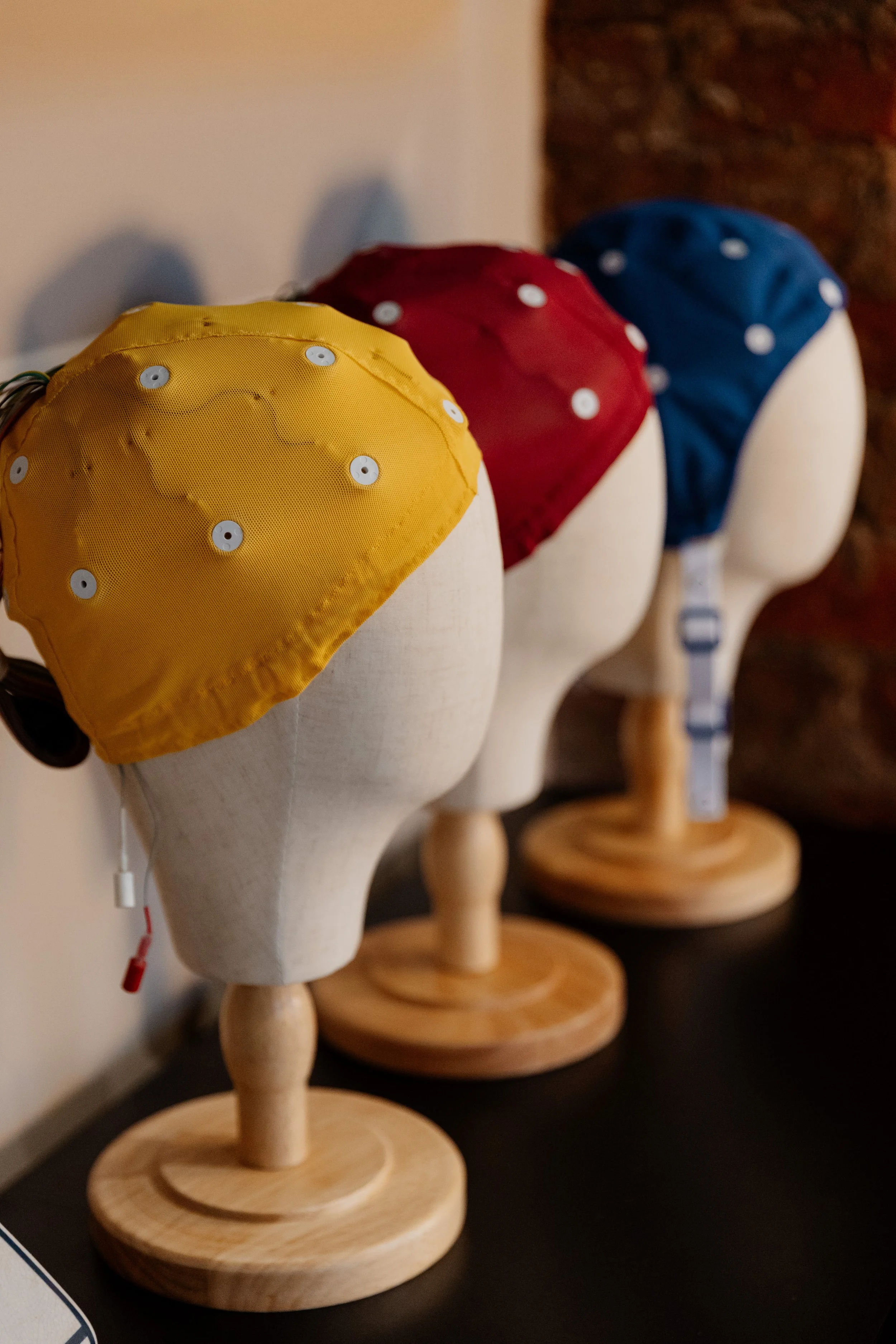
Map your brain
A QEEG, or quantitative EEG brain map, is a sophisticated analysis of your brain’s electrical activity using computerised tools, allowing us to assess and understand how your brain is functioning with precision.
An essential part of the assessment process at Optiminds is a QEEG brain map. We can only train a brain that we have first evaluated, and this process helps us ensure that neurofeedback is a suitable and effective approach for you.
But QEEG isn’t only for those interested in neurofeedback - it’s also a fascinating way to learn more about your own brain. Your brain map provides a window into how your mind processes information, manages stress, regulates emotions, and maintains focus. Many people find it empowering and insightful to see their unique brain patterns and to better understand the connection between their inner world and everyday experience.
WHY HAVE A qEEG brain map?
A QEEG brain map gives a detailed picture of how your brain is functioning - showing patterns of activity that relate to things like focus, stress, energy, mood, and sleep.
While most brain scans look for structural issues, QEEG looks at how your brain communicates. It helps you see the unique ways your brain processes information, responds to stress, and maintains balance
What are the benefits of a QEEG?
Personal insight – Understand how your brain works best and what might be holding you back.
Clarity and awareness – See how patterns in attention, mood, or sleep might be reflected in your brain activity.
Objective information – Move beyond guesswork with data that shows which brain areas are overactive, underactive, or well balanced.
A visual guide – View your brain’s activity in a colourful, easy-to-understand map that makes invisible processes visible.
A starting point for growth – Identify strengths to build on and areas that may benefit from support or training.
Empowerment – Learn how your brain’s patterns relate to your everyday experience - helping you make more informed choices for wellbeing and performance.
A QEEG doesn’t diagnose or label - it simply offers a clearer window into your brain’s activity, helping you understand yourself on a deeper level. Whether you’re curious about your focus, stress response, creativity, or simply want to know how your brain operates, QEEG provides a powerful foundation for self-awareness and growth.

What can you see in a QEEG Brain map?
A QEEG Brain Map provides precise and detailed information about how your brain's physiology supports your cognitive abilities and emotions. QEEG uses statistical methods to analyse and assess brainwaves by comparing your individual data against a normative database of healthy, high-performing individuals of the same age.
From a QEEG assessment, we can identify;
Frequencies in the brain: Delta (0-4 Hz), Theta (5-8 Hz), Alpha (9-12 Hz), Low Beta (13-16 Hz), Mid Beta (17-25Hz), Hi Beta (26-30Hz), and Gamma (41-70Hz).
The amplitude of brainwaves
Symmetry in the brain
Coherence (quality of connections)
Phase (speed of connections)
Network Integration
These are all crucial patterns and objective measures to evaluate optimal mental functioning.
Your brain’s electrical fingerprint
Who Can Have a qEEG?
A QEEG brain map is suitable for most people who are curious to understand more about their brain function - whether you’re exploring neurofeedback training, looking to enhance performance, or simply interested in how your brain works.
Generally, QEEG is best suited for individuals aged 7 and above. This is because younger children often find it difficult to stay still long enough for accurate recording, and the process requires cooperation throughout.
To complete a QEEG, you’ll need to tolerate wearing a special cap fitted with small sensors and a gentle gel that helps measure your brain’s electrical activity. The process is completely non-invasive and painless - there are no stimulations involved. Most people find it comfortable once the cap is in place, and the mapping itself typically takes around 20–30 minutes once setup is complete.
If you’re unsure whether a QEEG is right for you or your child, we’re happy to talk you through the process and help you decide whether it’s a suitable option.

WHAT’S INVOLVED IN THE QEEG PROCESS?
1. A QEEG assessment involves placing a cap with 19 sensors on the head. The gel is placed under each sensor with a syringe to ensure effective conductivity to read the brainwaves. This is entirely painless and non-invasive.
2. You are then asked to sit and relax, staying as still as possible, with your eyes open for around 10 minutes. We then ask you to close your eyes, again staying as still as possible, whilst we record your brain activity for another 10 minutes or so. During this time, the sensors simply listen to your brainwaves and record them on the computer for later analysis.
3. After the in-person QEEG recording, we take time to thoroughly review your entire assessment, consolidating all aspects of the assessment process (symptomology forms, interview, QEEG and performance test). Within two weeks, we will contact you to review your results and make recommendations for your individualised brain training plan.
4. Please note that we are not doctors or psychiatrists and, therefore cannot make diagnoses from a QEEG brain map. A medical diagnosis always requires a full assessment from a licensed physician.
Once you have obtained your results, you can decide if you would like to start neurofeedback brain training sessions; the choice is completely yours.


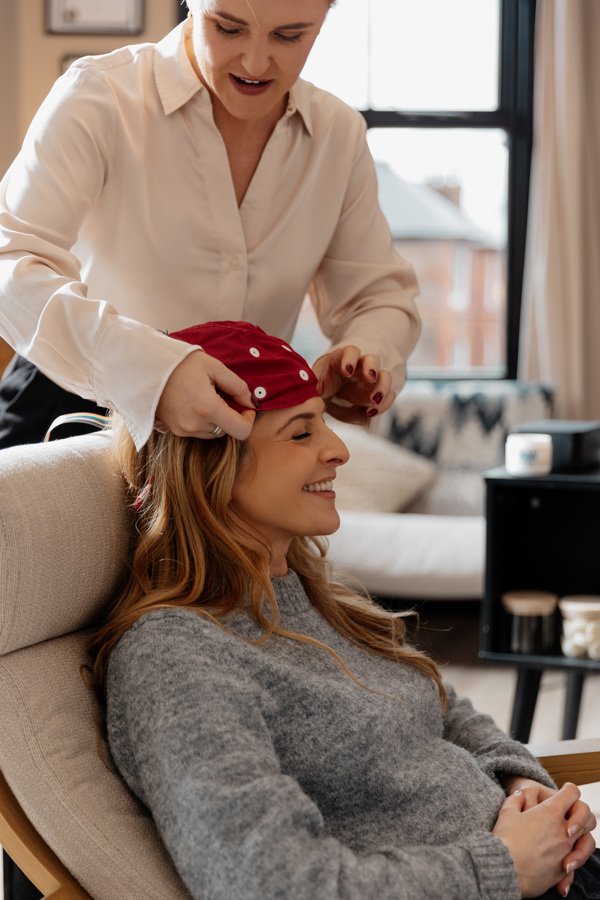
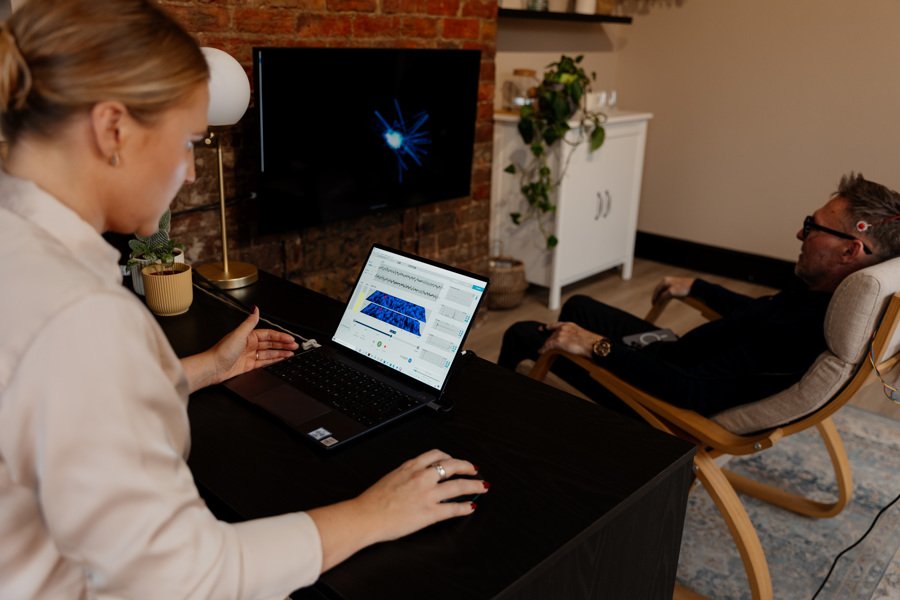
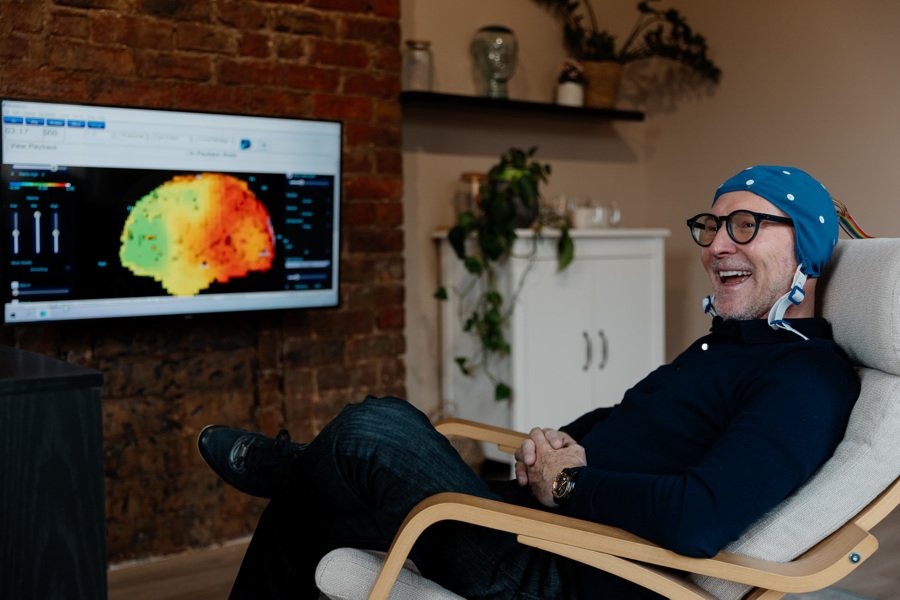
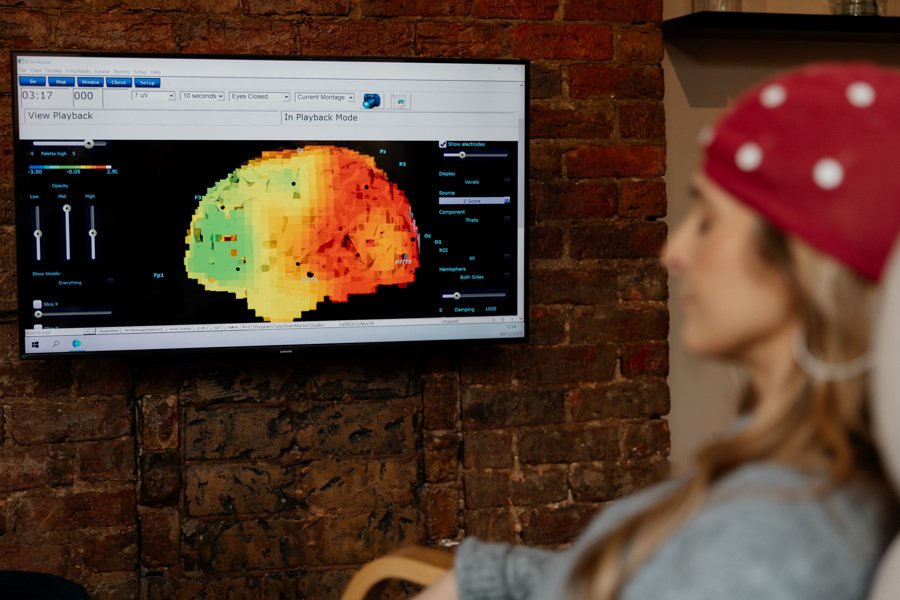
How to prepare for your QEEG session
Following the steps below before your appointment are critical to obtaining a good quality QEEG study of brain function. The brain mapping results are only as good as the recording, so it is important that you carefully follow each of the steps below:
get good sleep
We appreciate it’s not always easy but try to get a good night’s sleep and rest the night before
have clean hair
Your hair will need to be clean and dry for the QEEG assessment so please avoid the use of oils, gels, hairspray and waxes or any other hair products. Please make sure your hair is dry.
avoid caffeine
Avoid coffee, tea and other caffeinated beverages on the day and make sure you drink plenty of water
inform us of medications
Do share with us details of any current medications you are taking. If you are taking stimulant medication it is preferable to avoid it for 48 hours before the QEEG assessment. This must be done with the consent of your prescribing practitioner.
alcohol and drugs
Tell us if you have used any drugs or alcohol within the last 72 hours





